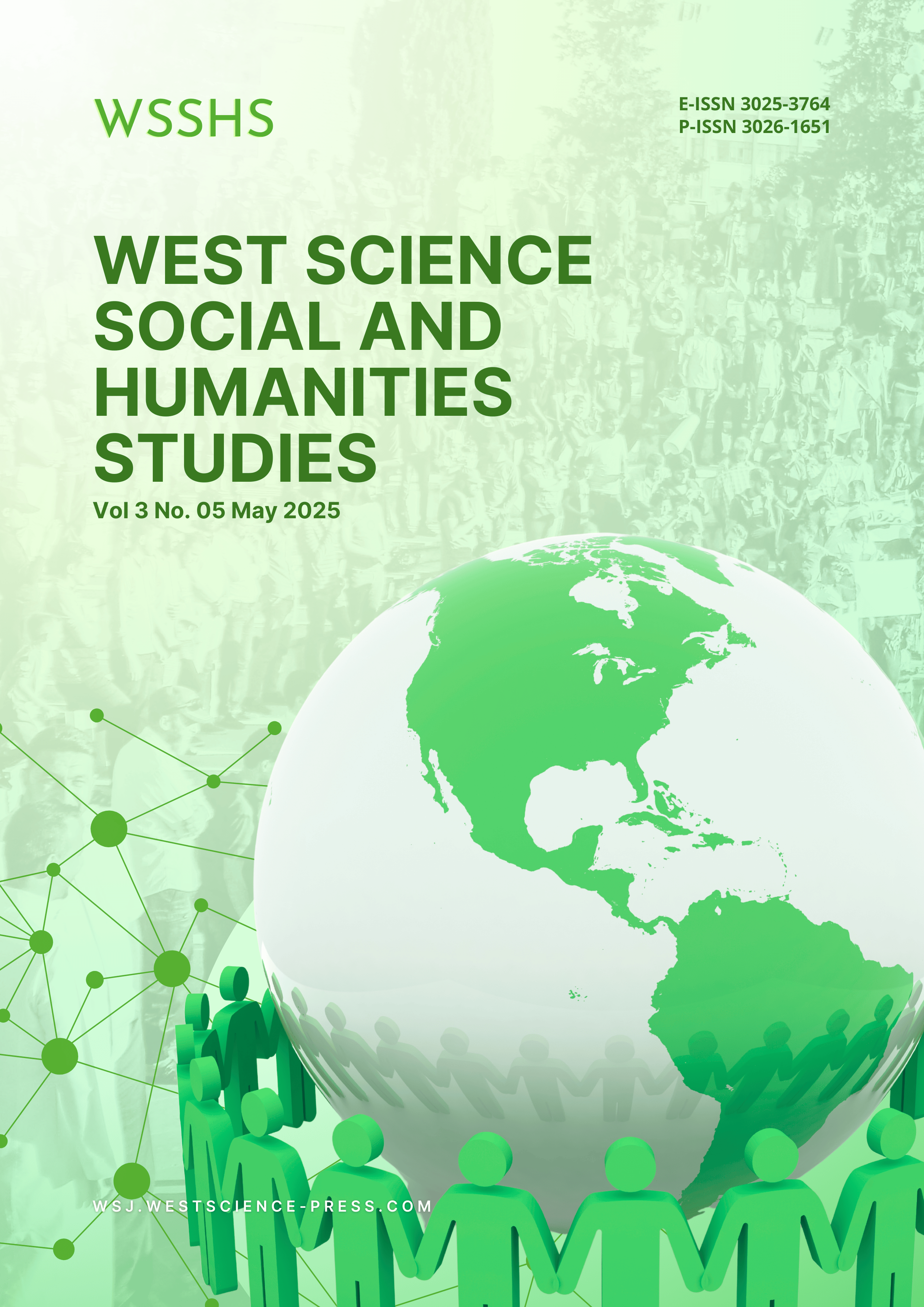Visual Transformation of Gender Representation on The Famous Five: Five on a Treasure Island Book Covers (1942-2017)
DOI:
https://doi.org/10.58812/wsshs.v3i05.1921Keywords:
Gender Representation, Book Covers, Visual Analysis, The Famous Five, Children's LiteratureAbstract
This study examines the visual transformation of gender representation on the covers of Enid Blyton's "The Famous Five: Five on a Treasure Island," comparing editions from 1942 and 2017. Using Kress and van Leeuwen's Grammar of Visual Design framework, the research analyzes how visual elements construct gender meaning across different historical contexts. The findings reveal a significant shift in the representation of George (Georgina), from a distinctly masculine-coded character in the 1942 edition to a more feminized portrayal in 2017. Despite being produced in an era of greater gender discourse, the contemporary cover paradoxically presents a less subversive visual model of gender nonconformity. The 1942 illustration depicts George in an active, central position with masculine visual coding that aligns with the character's narrative identity. In contrast, the 2017 cover introduces feminine elements through clothing, posture, and composition that create tension with the character's established rejection of femininity. This transformation reflects complex interactions between changing social norms, commercial considerations, and visual conventions in children's media, demonstrating how design decisions actively participate in constructing cultural understandings of gender.
References
[1] A. Maunder, “Adventure,” in Enid Blyton, Cham: Springer International Publishing, 2021, pp. 139–172. doi: 10.1007/978-3-030-76332-9_6.
[2] UNESCO, “Index Translationum: UNESCO Culture Sector.” Accessed: Jan. 03, 2025. [Online]. Available: https://www.unesco.org/xtrans/bsstatexp.aspx?crit1L=5&nTyp=min&topN=50
[3] L. M. Ward and P. Grower, “Media and the Development of Gender Role Stereotypes,” Annu Rev Dev Psychol, vol. 2, no. 1, pp. 177–199, Dec. 2020, doi: 10.1146/annurev-devpsych-051120-010630.
[4] C. S. Ratri and R. M. Sihombing, “Gender Perspective in Design and Illustration of Children’s Books,” 2021. doi: 10.2991/assehr.k.211228.057.
[5] K. Gardiner, “Tomboys: Performing gender in popular fiction,” Image & Text, no. 35, 2021, doi: 10.17159/2617-3255/2021/n35a2.
[6] R. Elton, “Masculinities in British and French Children’s Fiction,1940-1970.,” The University of Leeds, 2024. Accessed: Jan. 02, 2025. [Online]. Available: https://etheses.whiterose.ac.uk/35013/1/PhD_RebeccaElton_final_corrections.pdf
[7] G. Kress and T. van Leeuwen, Reading Images. Third edition. | London; New York: Routledge, 2021.: Routledge, 2020. doi: 10.4324/9781003099857.
[8] Stuart Hall, Representation: Cultural Representations and Signifying Practices. Sage, 1997.
[9] D. Chandler, Semiotics: The Basics, 4th ed. London: Routledge, 2022.
[10] I. H. Aisyah and D. Rinjani, “Pengaruh Seni Ilustrasi dalam Meningkatkan Minat Baca (Studi Desain Novel Karya Tere Liye),” INVENSI, vol. 8, no. 1, pp. 1–13, Feb. 2023, doi: 10.24821/invensi.v8i1.7184.
[11] Sukanya Balaji, “Exploring Gender in Enid Blyton’s ‘Famous Five,’” https://eduindex.org/2021/06/29/exploring-gender-in-enid-blytons-famous-five/.
[12] X. Sun, “The Influence of Illustrations in Literary Texts on Children’s Reading Comprehension,” Lecture Notes in Education Psychology and Public Media, vol. 22, no. 1, pp. 204–212, Nov. 2023, doi: 10.54254/2753-7048/22/20230311.
[13] F. Chelsea, E. C. Yuwono, and V. Yusuf, “Strategi Penerapan Gaya Ilustrasi pada Desain Kemasan Board Game Sesuai Preferensi Generasi Z,” JADECS (Journal of Art, Design, Art Education & Cultural Studies), vol. 9, no. 1, p. 12, Apr. 2024, doi: 10.17977/um037v9i12024p12-25.
[14] L. Erickson- Schroth and B. Davis, Gender: What Everyone Needs to Know. New York, NY: Oxford University Press, 2021.
[15] R. Imtiyaz, S. Inriana, and T. Regina, “Analisis Visual Pada Sampul Buku Cerita Anak Tentang Permainan Tradisional,” Visual Heritage: Jurnal Kreasi Seni dan Budaya, vol. 5, no. 3, pp. 331–338, May 2023, doi: 10.30998/vh.v5i3.6246.
[16] E. Goffman, Gender Advertisements. London: Macmillan Education UK, 1976. doi: 10.1007/978-1-349-16079-2.
[17] A. Jiang and S. Westland, “Colour Preference,” 2024, pp. 79–94. doi: 10.1007/978-3-031-70920-3_6.
[18] Janet Best, Colour Design: Theories and Applications, 2nd ed. Woodhead Publishing, 2017.
[19] B. Ahi, “The World of Plants in Children’s Drawings: Color Preferences and The Effect of Age And Gender On These Preferences,” Journal of Baltic Science Education, vol. 16, no. 1, pp. 32–42, Feb. 2017, doi: 10.33225/jbse/17.16.32.
[20] Z. Xue, Q. Li, J. Zhao, and X. Zeng, “An investigation into the relationship between clothing colors and gender stereotyping in children,” Journal of Retailing and Consumer Services, vol. 76, p. 103559, Jan. 2024, doi: 10.1016/j.jretconser.2023.103559.
[21] F. A. Sakti, T. Widodo, and A. R. Prasetyo, “Penciptaan Seni Lukis Semi-Realis Digital sebagai Apresiasi Terhadap Pemuda Penggiat Kebudayaaan Tradisional Masa Kini,” INVENSI, vol. 7, no. 2, pp. 87–103, Dec. 2022, doi: 10.24821/invensi.v7i2.6344.
[22] R. A. Palit and N. Sulaiman, “REPRESENTASI BUDAYA POPULAR DALAM ILUSTRASI KARTUN YESUS KRISTUS DI SITUS PENYEDIA GAMBAR ONLINE,” Serat Rupa Journal of Design, vol. 6, no. 2, pp. 178–203, Jul. 2022, doi: 10.28932/srjd.v6i2.4178.
[23] B. Grohmann, “Communicating brand gender through type fonts,” Journal of Marketing Communications, vol. 22, no. 4, pp. 403–418, Jul. 2016, doi: 10.1080/13527266.2014.918050.
[24] J. Shrimpton, Fashion in the 1940s, 1st ed. Bloomsbury Publishing, 2014.
[25] K. BILL, “Attitudes Towards Women’s Trousers: Britain in the 1930s,” J Des Hist, vol. 6, no. 1, pp. 45–54, Jan. 1993, doi: 10.1093/jdh/6.1.45.
[26] H.- Humaira and E. Fitriani, “PENGUATAN MASYARAKAT KONSUMEN ABAD KE-21: STUDI KASUS KONSUMERISME FAST FASHION DI INGGRIS,” Paradigma: Jurnal Kajian Budaya, vol. 11, no. 2, p. 238, Sep. 2021, doi: 10.17510/paradigma.v11i2.506.
[27] R. Gill, “Postfeminism and the New Cultural Life of Feminism,” Diffractions, vol. 6, pp. 1–8, 2016.
[28] Judith Butler, Gender Trouble: Feminism and the Subversion of Identity. Routledge, 2006.
[29] B. Handayani and Y. Daherman, “Wacana Kesetaraan Gender: Kajian Konseptual Perempuan Dan Pelaku Media Massa,” Jurnal Ranah Komunikasi (JRK), vol. 4, no. 1, p. 106, Aug. 2020, doi: 10.25077/rk.4.1.106-121.2020.
Downloads
Published
Issue
Section
License
Copyright (c) 2025 Farid Imaduddin, Taufik Murtono

This work is licensed under a Creative Commons Attribution-ShareAlike 4.0 International License.




















 Instagram
Instagram 